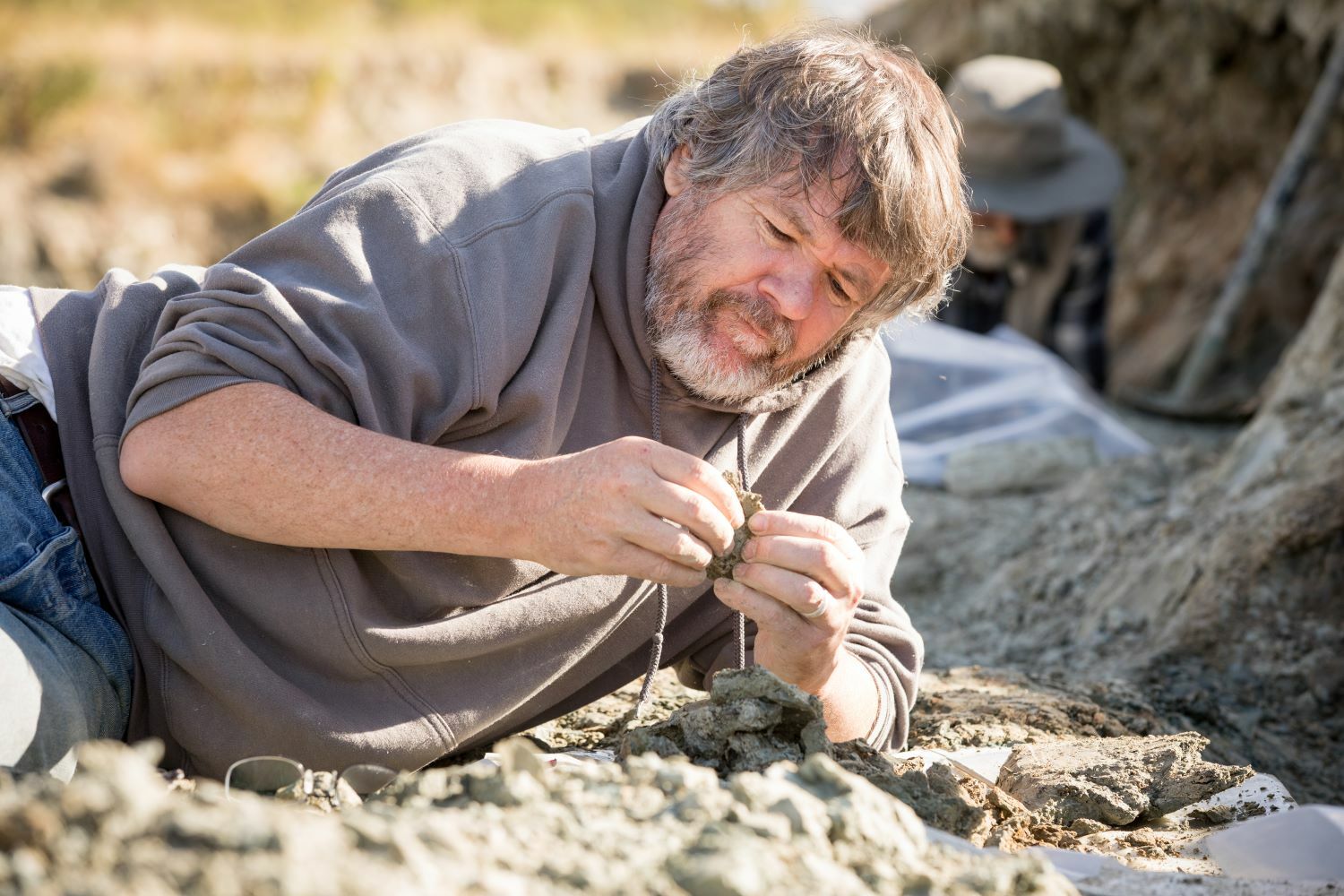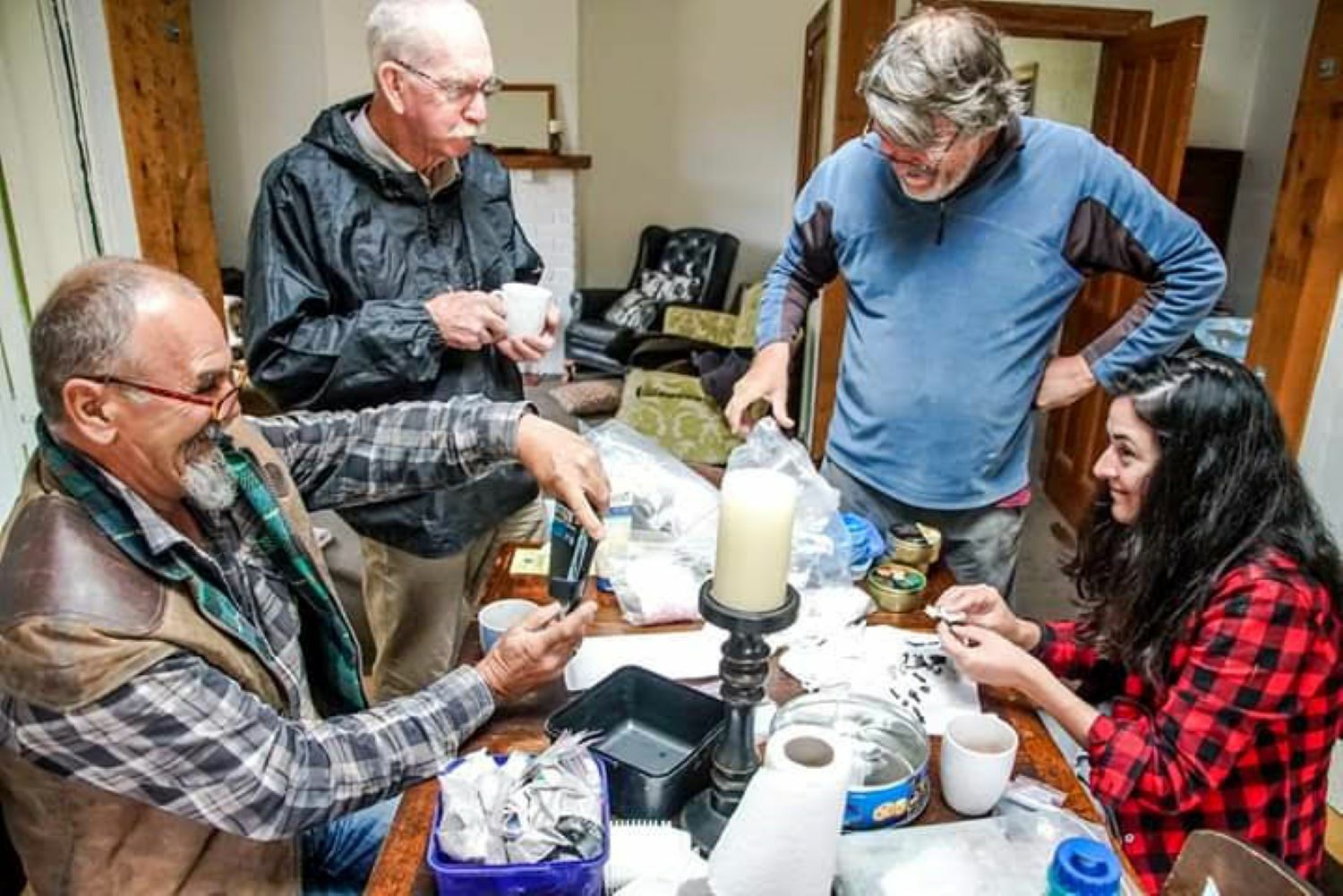Although the Rolleston Avenue “mothership” is now closed, the Museum’s curatorial team remain very busy with their research programmes.
In 2023, our St Bathans palaeontology project entered its 22nd year and due to generous support from the Museum’s R S Allan Fund, it is still going strong.
Over the last year, Museum staff and collaborators in Australia and Germany published four significant papers describing six new species including a bizarre new bird group and rare fossil fish that we described based on the tiny remains of their inner ears. Many more publications will be forthcoming, but our research output relies on the fieldwork we undertake each year.
Our seasoned team of veterans from the Museum, the University of Canterbury and Flinders University (Adelaide), along with our volunteer stalwarts and students, recently returned from a successful 10-day trip to Central Otago with a tonne of sediment and hundreds of significant new finds.
The public might think that palaeontology – the study of the Earth’s prehistory – is all about digging up the gigantic remains of dinosaurs and large animals but the real magic happens when we look at the grains and granules of the soil.

Our understanding of how animals and plants got to Aotearoa New Zealand is fragmented due to the poor quality of our terrestrial fossil record. We only have one site, which is more than 3 million years old, where we find the remains of animals that lived on Zealandia after the event that caused the extinction of the dinosaurs.
That site is St Bathans in Central Otago where we have a small window into what Aotearoa New Zealand looked like 20 million years ago. While we have found some large and exciting fossils, such as the remains of crocodiles and a giant parrot (nicknamed Squawkzilla), the real gems are the microfossils. By sieving tonnes of dirt, we find the teeth of bats and tiny birds, skinks, frogs and geckos, as well as ear stones (otoliths) from fish related to today's whitebait.

It is these unassuming fossils that carry by far the most important evolutionary stories. Our country was once very different to what we see today with species of birds that are now long gone and bats that walked on the forest floor. The forests were more like Australia and the fish much larger.
For the last 2 months we have been processing our discoveries and the raw sediment we brought back from St Bathans. The sediment collected from particular layers needs to be dried to allow the chemical bonds holding the clays together to break down, and then finely sieved with water. This reduces the material by about 90% removing all the unproductive sand, silt and rocks.
We then have the time-consuming task of examining each and every sieved grain to find the gems that include bats teeth, frog arm bones and otoliths from whitebait. Occasionally we find larger items such as crocodile teeth and the limb bones of small birds.
Discovering ancient Aotearoa New Zealand is a hard-fought battle that requires long hours in the field but we are slowly finding out more and solving the riddles of what our country was once like. These insights will be a major feature of the displays in the redeveloped Canterbury Museum when it reopens towards the end of 2028!












